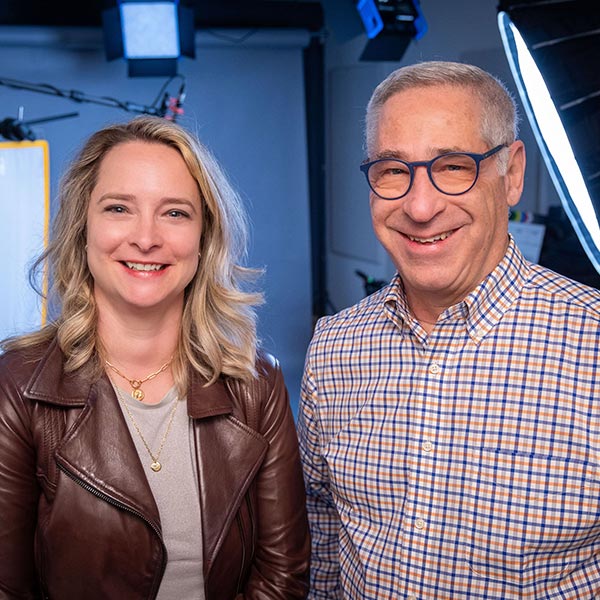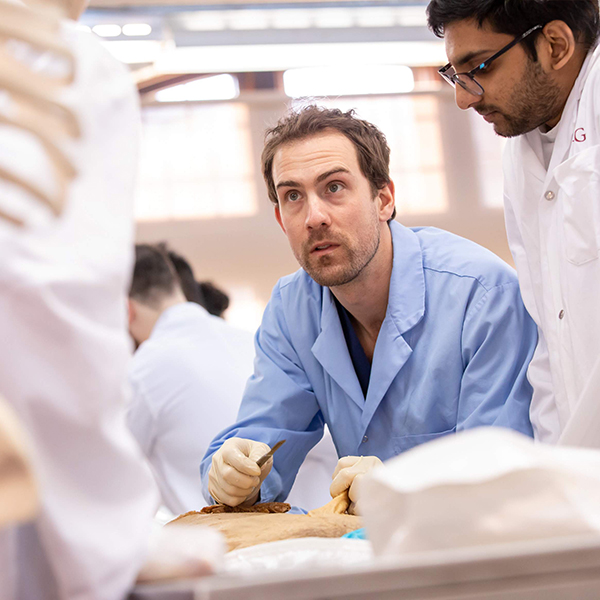Sports headlines have raised public awareness of concussions. But while pro athletes may be the most high-profile victims of brain trauma, they are far from the most common ones.
”Motor vehicle accidents probably account for the majority of traumatic brain injuries,” says Alain Ptito, BA’75, director of the McGill University Health Centre’s Department of Psychology. ”Someone can slip on ice and hit their heads on the sidewalk. It’s not just a concern for football players.”
By necessity, athletes are well aware of the risks they run. But on January 27, the MUHC and the Montreal Neurological Institute and Hospital (The Neuro) will hold a public lecture and panel discussion on the subject, to better educate the general public about everyday risks.
”The media tends to focus on professional athletes, and we can learn a lot from what happens to them. But those are not the vast majority of people sustaining concussions”, says Scott Delaney, MDCM’91, a keynote speaker at the public lecture. Delaney is a team physician with both the Canadian Football League’s Montreal Alouettes and Major League Soccer’s Montreal Impact, and the research director for the MUHC’s Department of Emergency Medicine.
”Professional athletes are just the tip of the pyramid. At the bottom of that pyramid are the recreational and high school sports, where there are many more people participating. Athletes, parents, coaches – they all need to be aware of the signs and symptoms of a concussion, and the risks and ramifications of continuing to play. We have found that education makes the biggest difference.”
The January 27 event, called Heads Up on the Concussion Issue, will feature McGill experts as well as retired pro athletes, including former NHL goaltenders and Hall of Famers Ken Dryden, LLB’73, and Mike Richter, and former world champion diver Alexandre Despatie.
Says Ptito, who will participate in the panel discussion, ”I think people want to hear from athletes who have gone through the experience, and who can inform and warn them about the kinds of symptoms one can expect.”
The event is also a fundraiser in support of McGill’s innovative concussion research, which uses functional MRI (fMRI). Conventional MRI techniques may put accident victims at risk because they often fail to detect brain injuries.
”One of our research initiatives is to test varsity athletes before the season begins”, Ptito explains. ”Later, if they sustain a concussion, we repeat the testing.” FMRI looks at the brain in activity, while the subject is carrying out a task in the scanner. Activity causes changes in oxygen levels in several regions of the brain. FMRI allows researchers to gain a clearer picture of the differences in brain activity caused by concussions.
”Usually, there is a lack of activation in symptomatic individuals after a concussion,” says Ptito.
”The more severe the symptoms, the lower the activation. When the symptoms resolve, we observe a return to normal brain activity.”
McGill researchers are also investigating the mystery of why women and children recover more slowly from concussions.
”We don’t know why that is so,” says Ptito. ”We have some theories; when it comes to women, it may be because the musculature in the neck is less strong than in men, so they are more vulnerable. In children, there seems to be more of a diffuse effect over the whole brain. These are all extremely important questions, so we need to raise funds to continue investigating them.”
The funding will also be used to help develop diagnostic and treatment tools, and research into return-to-activity decisions (i.e., the decision-making that determines when athletes can return to the playing field after suffering a concussion).
On that subject, Laurent Duvernay-Tardif is uniquely placed to provide insight. He is a McGill medical student, as well as a guard playing on the offensive line for the NFL’s Kansas City Chiefs.
He feels that sports leagues and teams have taken proactive steps to deal with the issue in recent years, including rigorous procedures whereby a player has to be cleared by a team doctor before returning to play. As for the players, Duvernay-Tardif says an element of team camaraderie emphasizes concern for another player’s symptoms.
”In my experience, when it looks like someone may have suffered a concussion, there is no peer pressure to get back on the field. Quite the opposite; players tell him to take his time, that we can win the game without him. They respect each other’s symptoms. Compared to 40 or 50 years ago, that is a tremendous change of mentality.”
For sports teams, Delaney feels that one of the most promising developments has emerged in the past few years.
”Teams now have spotters who watch the game and television feed. They will alert [team doctors] if they see behavior concordant with a concussion, such as a loss of consciousness or spasm right after a collision – and suggest that we evaluate the player. These physical signs of a concussion might only take a few seconds, so it’s helpful to have someone who is trained to look for them.”
Heads Up will be held at Love Competition Hall, in the McGill Sports Centre. It will include a poster session, in which researchers will summarize their work on posters, from 5 to 10 pm. The lecture and panel discussion will be held from 7 to 9 pm.


